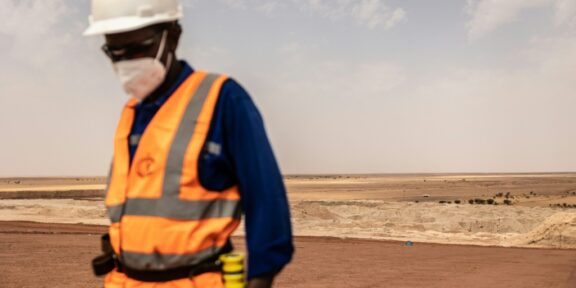Speeding along crumbling roads past dusty villages and herds of sheep, a team of cyclists turns heads in China’s Inner Mongolia withtheirunusual equipment. The group, most of them wheelchair users, were strapped into low-slung, three-wheeled handcycle bikes instead of the two-wheeled mountain bikes more commonly seen on the challenging terrain.Dodging trucks and car-sized potholes, they barrelled down country roads towards the regional capital Hohhot, frequently greeted with excited shouts by groups of villagers.The cyclists are members of Krankin’ Thru China, formed over a decade ago to promote wheelchair users’ participation in open-air sports. China passed an accessibility law last year aimed at creating a “barrier-free” society but everyday life for people with disabilities can still be challenging in many parts of the country.”From the very start we wanted to use handcycle bikes as a way to encourage injured friends to come outdoors,” said Wang Feng, who discovered adaptive bikes years after losing the use of his legs because of a childhood illness.Krankin’ Thru China has embarked on multiple long-distance trips in remote parts of the country, including a three-month journey in 2017 from the mountainous southwestern province of Yunnan to the capital Beijing.They have also collaborated with a Shanghai-based university to help build a prototype aimed at making handcycle bikes more affordable and widely available, one of which they tested on the odyssey through rural Inner Mongolia. – ‘So impressive’ -Wang and teammates Pan Yifei and Joshua Dominick set off in early May from Qahar Right Rear Banner, a sparsely populated area known for its mines and a nearby volcano park.Wang said he often meets people who don’t realise the bikes are designed with disability in mind. “When I tell them this is a hand-cranked bike for disabled people, they’re shocked… they think it’s so impressive,” he said.In Hohhot, the group met a disability association who took turns trying out the bikes.The locals propelled themselves rapidly around a running track as curious children and retirees looked on.”I saw this before in videos but I never tried it myself,” Di Wenke, a 36-year-old wheelchair dancer, told AFP.”I felt as fast as a machine… and I felt like onlookers envied me.”Di said that adaptive sports — including wheelchair dancing and handcycling — helped tackle some of the social stigma surrounding disability.”Compared to my previous closed-off mindset, my heart has opened up,” he said. “Having a hobby of your own can be a very nurturing thing.”As well as bike trips, Krankin’ Thru China hosts regular adaptive swimming and horseback riding events. “Among the injured friends that I know, they have experienced a change in their attitude,” Wang said, with many asking him for advice on becoming more involved.- Frequent obstacles -Many challenges remain. As the team approached Hohhot, they relied on word of mouth and trial and error to find country inns that could accommodate their wheelchairs.The riders needed assistance to climb the front steps of one place, and stairs and elevated bathroom floors were frequent obstacles.While China’s largest cities are making progress in building accessible infrastructure, smaller towns and rural communities are largely constructed without wheelchair users in mind.And when it comes to mountain biking, most adaptive bikes on the market are prohibitively expensive and constructed out of specialised parts that are difficult to replace.”It happened before, where we were on the road in Yunnan… that there was a breakdown, so this was quite a big safety risk,” Wang said.”A lot of assistive equipment has to be custom-made, causing it to be very expensive or for there to be very few (options)… so there are also very few people who can access these sports,” teammate Pan said.The prototype bike tested on this trip — designed by New York University researchers and built by the team alongside lecturer Noel Joyce and students at NYU’s Shanghai campus — is an attempt to change that. It is constructed of standardised parts available at most machine shops and based on an open-plan blueprint. Joyce told AFP he hopes the new model can lower the barriers to enjoyment of outdoor sports.”Anyone with a disability should be able to repair a bicycle in the same amount of time that anyone that’s able-bodied,” Joyce said.”It’s the start of trying to create scenarios where people with disabilities are more frequently out in the world and enjoying the world.”tjx/reb/pst
China wheelchair users claim outdoors with hand-cranked bikes
Post navigation
Posted in:
More Articles
By the same author
Warning: Attempt to read property "ID" on bool in /home2/yeswecan/public_html/wp-content/themes/reendex/inc/reendex-author-related-posts.php on line 35








